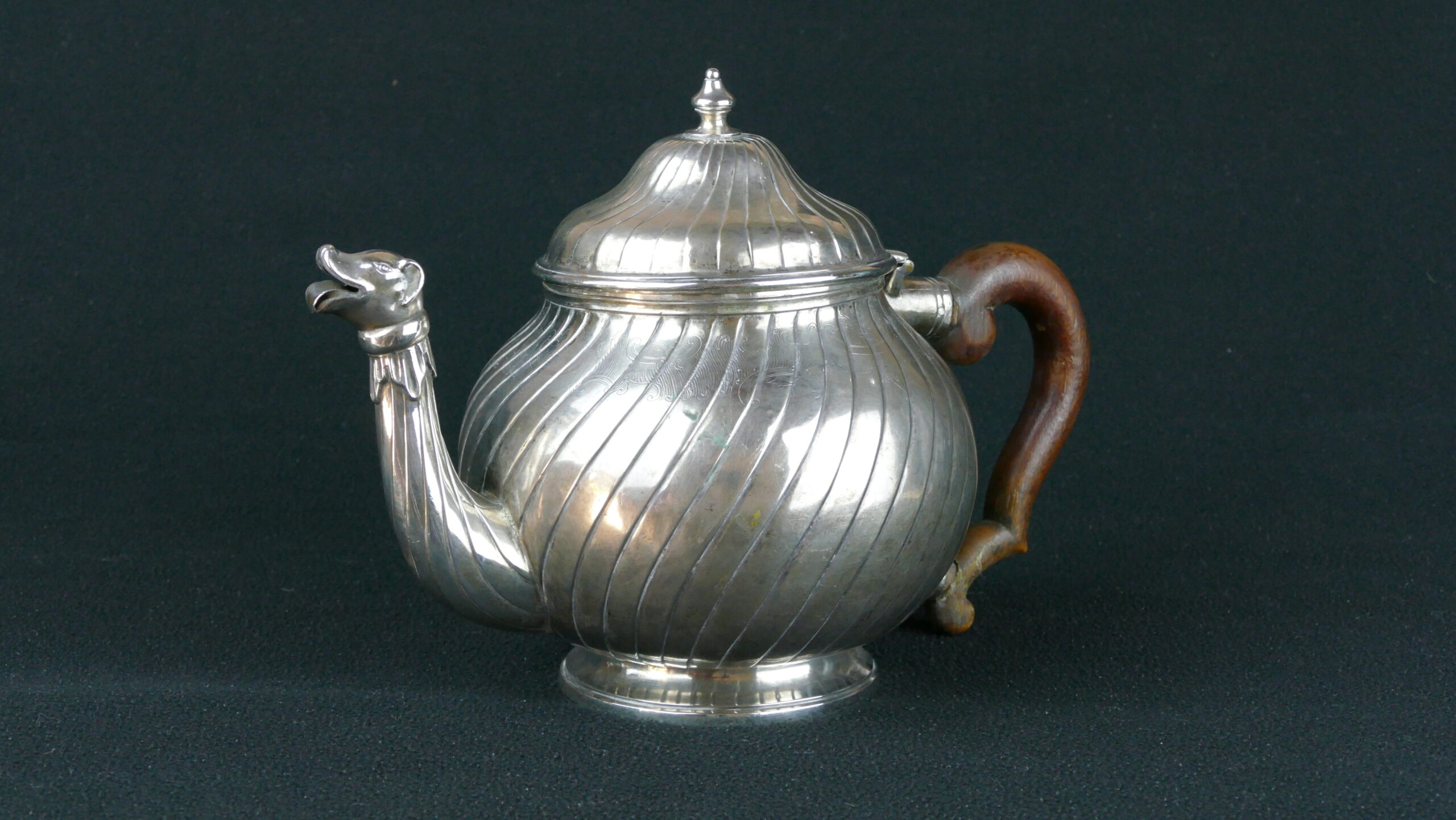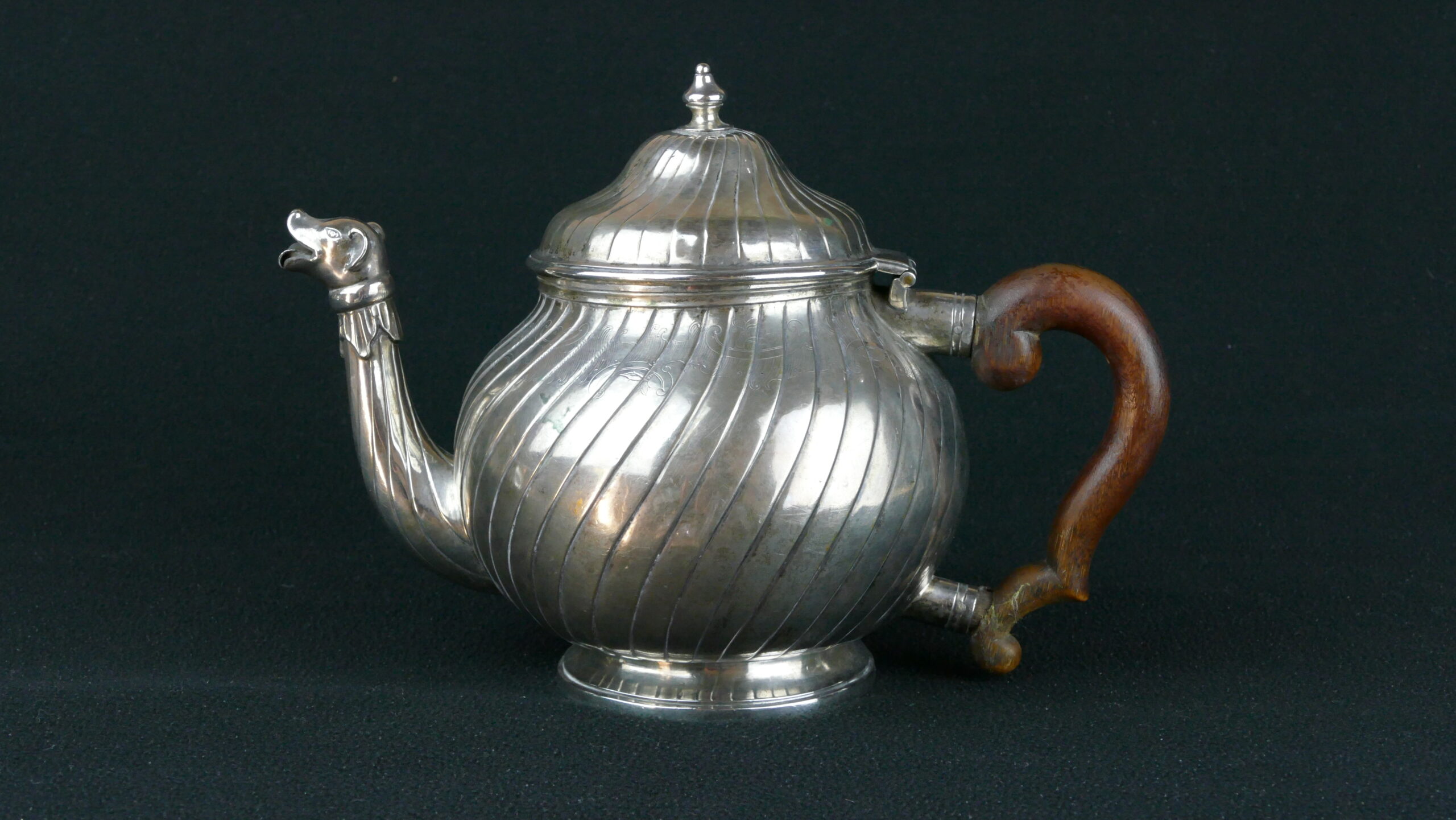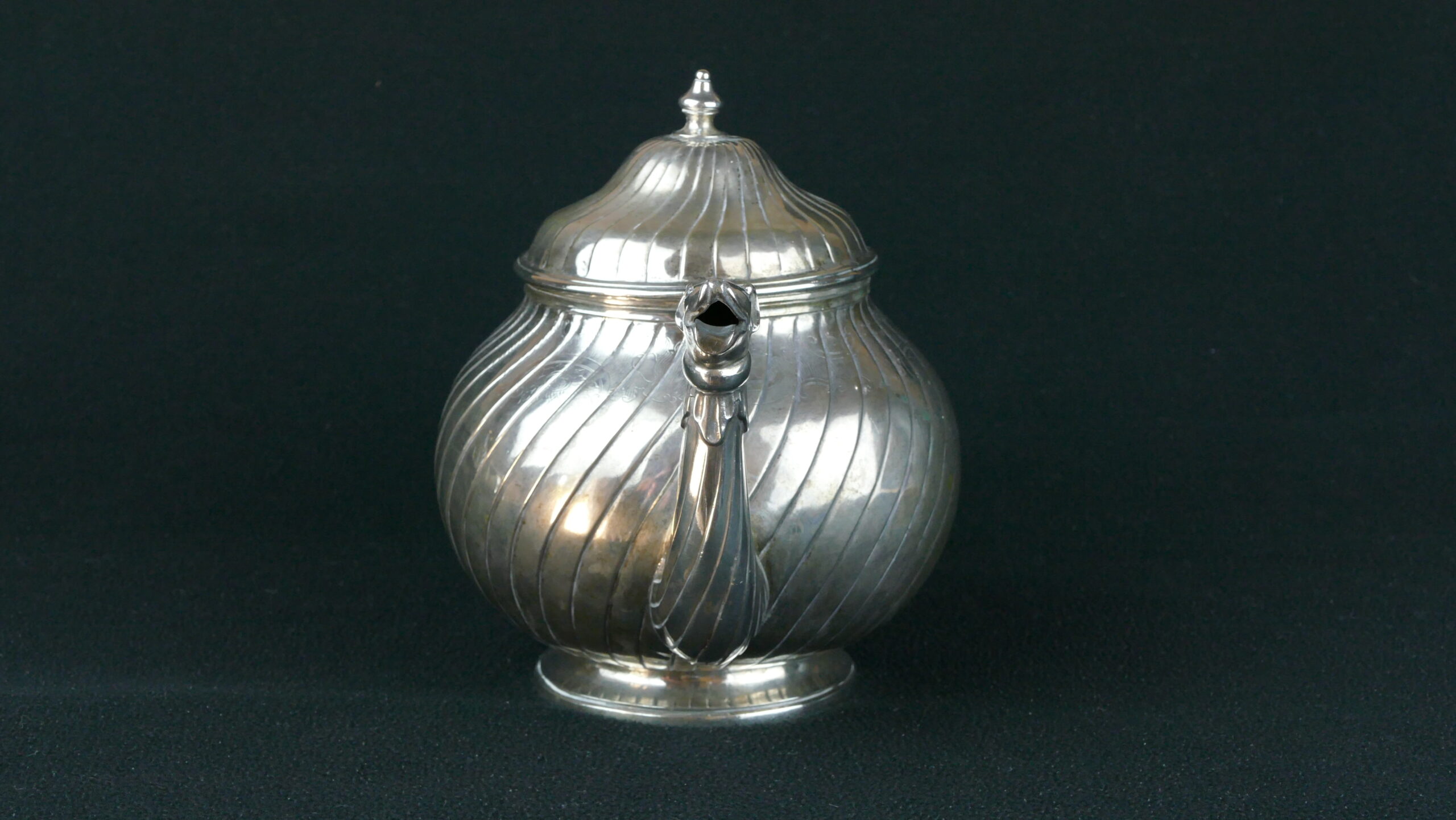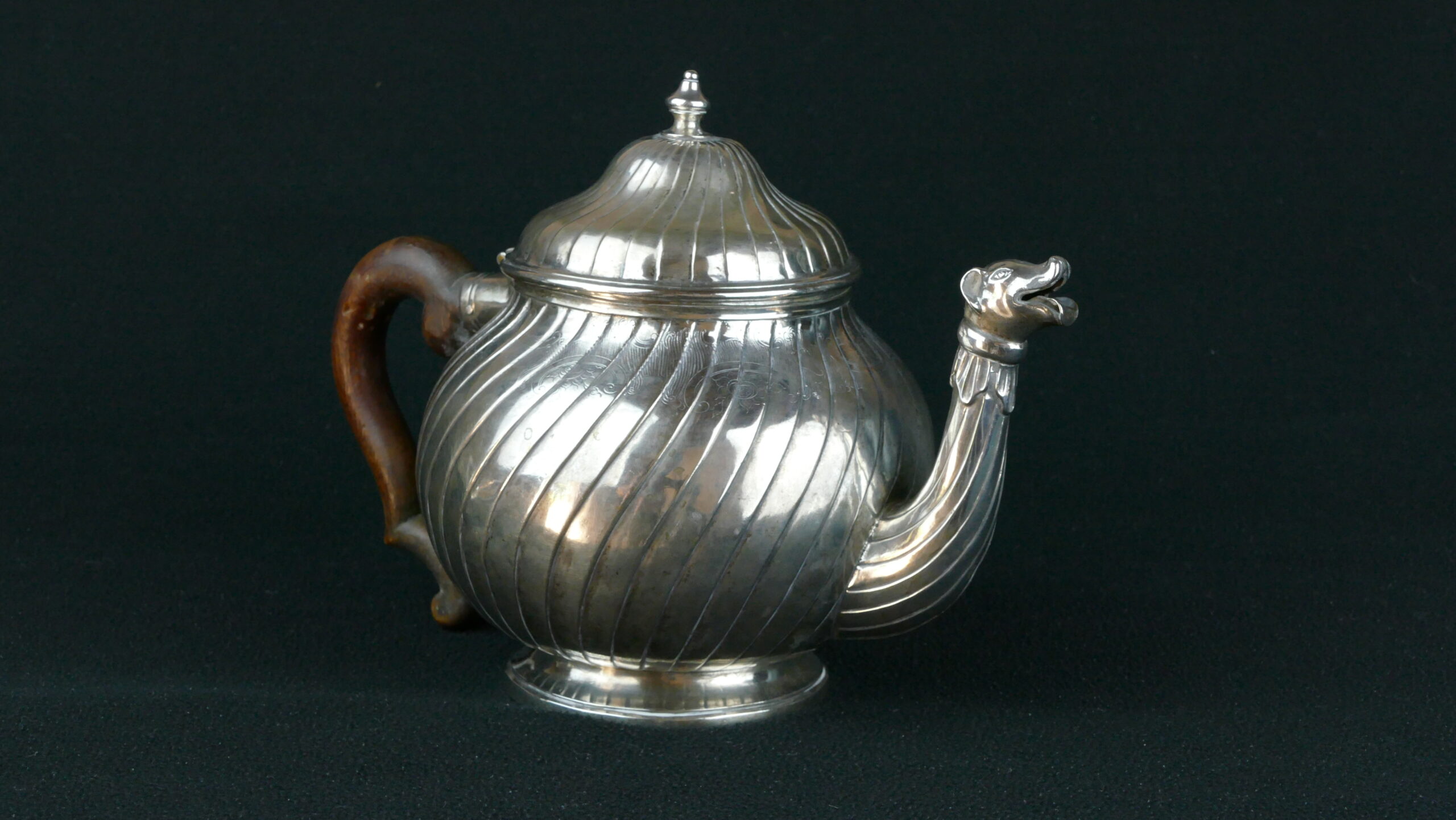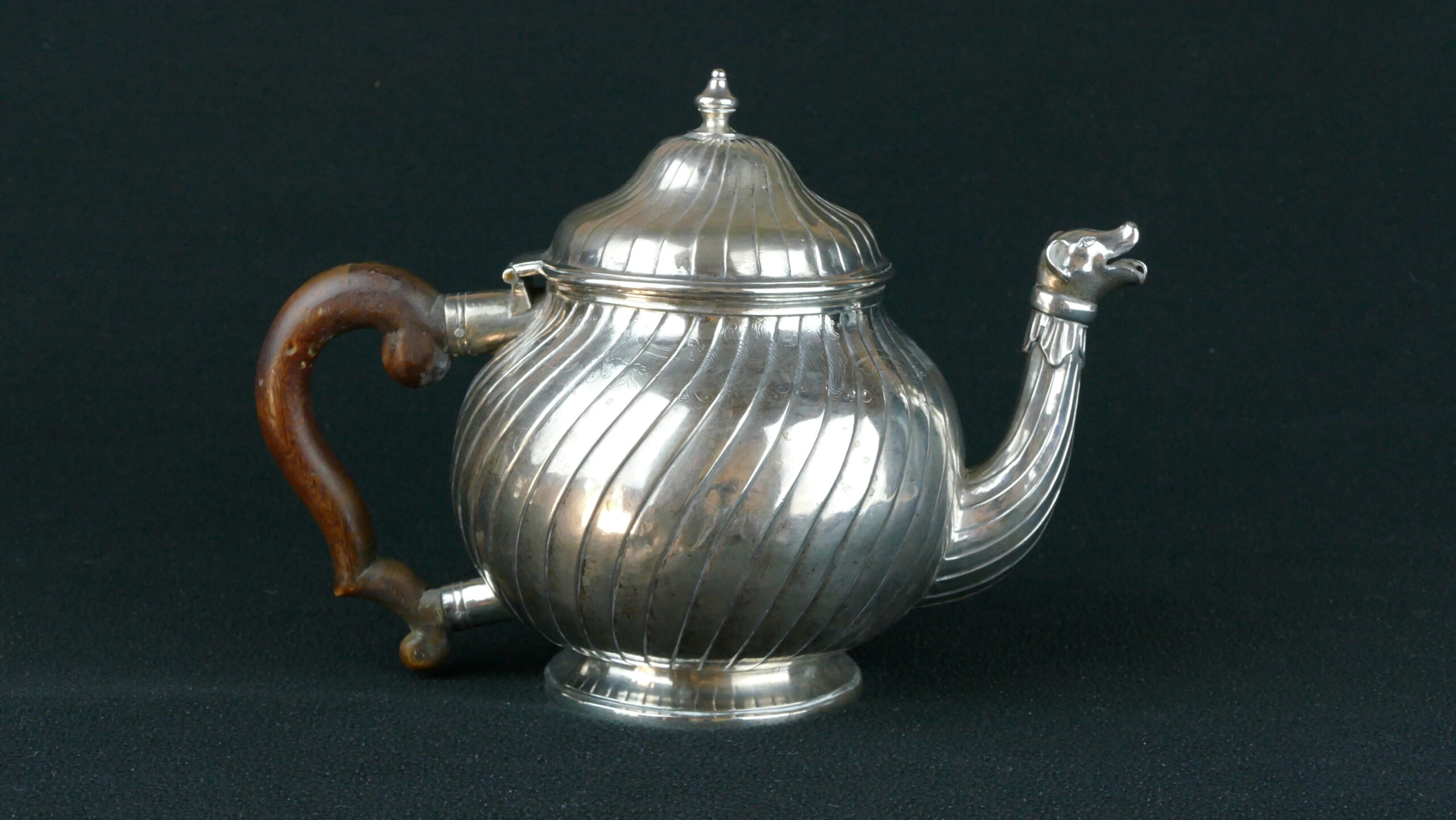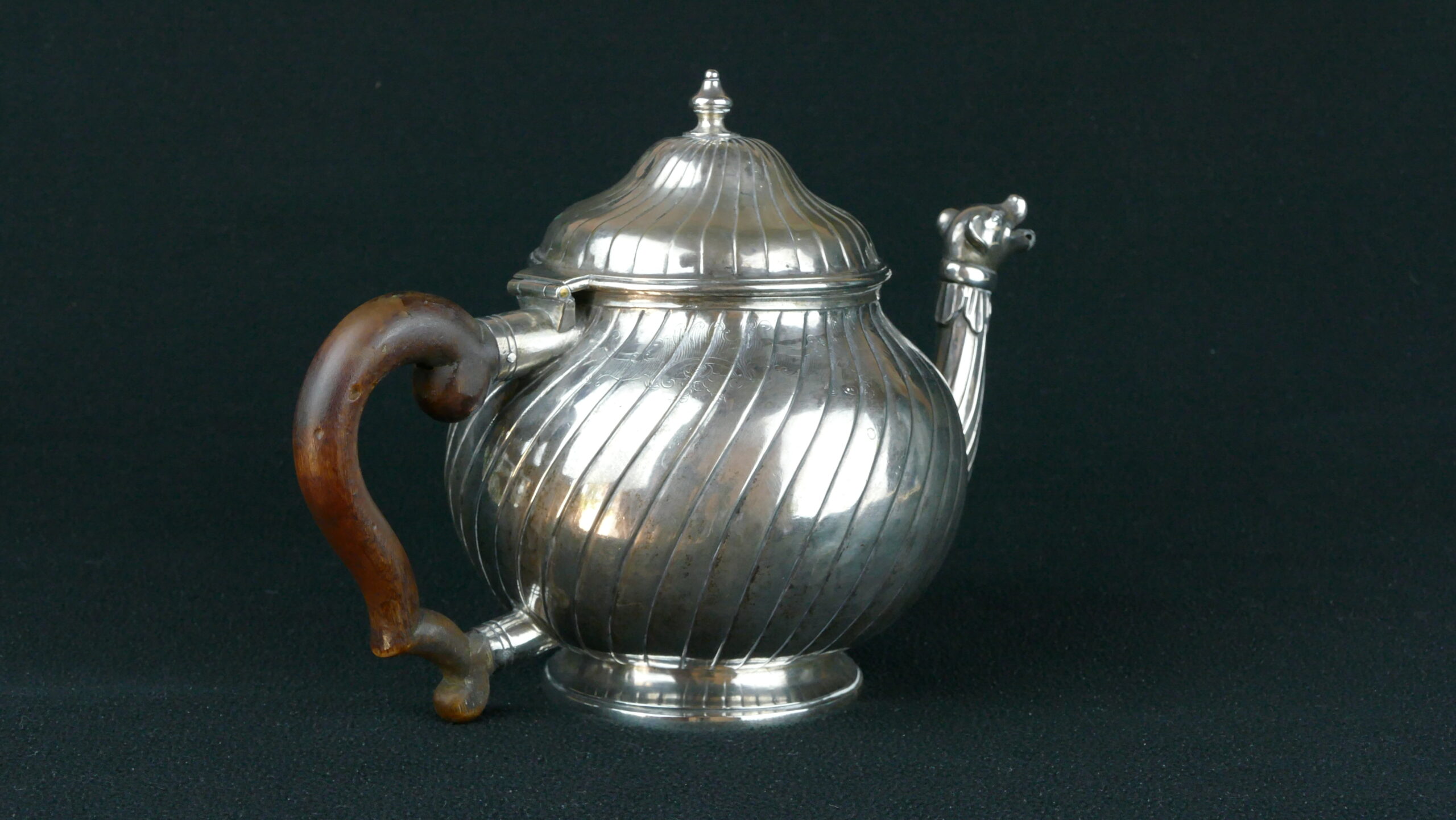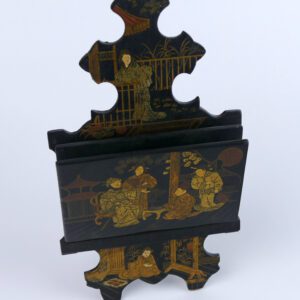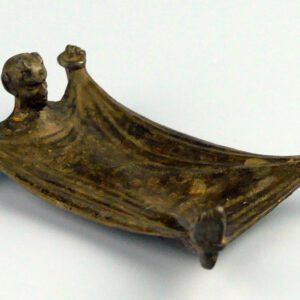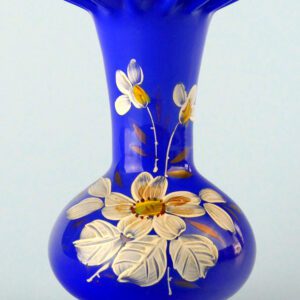This elegant silver teapot is a fine example of late 18th- to early 19th-century European craftsmanship, likely of Portuguese or broader Iberian origin. Its form is richly decorated with spiral fluting that gracefully wraps around the body and lid, creating a sense of movement and refinement. The bulbous body gently tapers toward the base, which is supported by a short, stepped foot ring.
One of the most striking features is the spout, sculpted in the form of an animal’s head—possibly a hound or dragon—an element typical of the Rococo or early Neoclassical styles, often intended to convey strength and sophistication. This zoomorphic detail adds both a whimsical and noble touch.
The wooden handle, likely made from a fruitwood such as walnut or boxwood, is elegantly curved and ergonomically positioned, providing both aesthetic warmth and practical insulation from heat. Its rich patina contrasts beautifully with the polished silver, underscoring the blend of natural and refined materials.
The lid, fitted with a small acorn-shaped finial, complements the body with matching spiral fluting and is hinged for convenience. The craftsmanship suggests it may have been made for a wealthy household, used in formal tea services or gatherings.
Altogether, this teapot combines functionality with artistic detailing, making it not only a usable object but also a decorative piece, ideal for collectors of antique silverware or period tableware.
Dimensions: 20 cm (height) x 18 cm (width)
Weight: 1185 g
